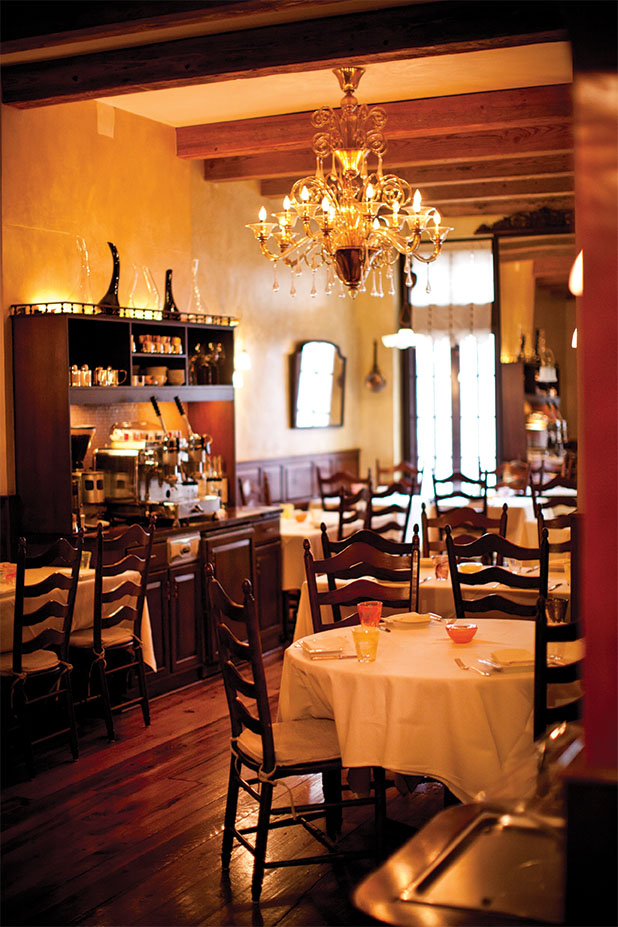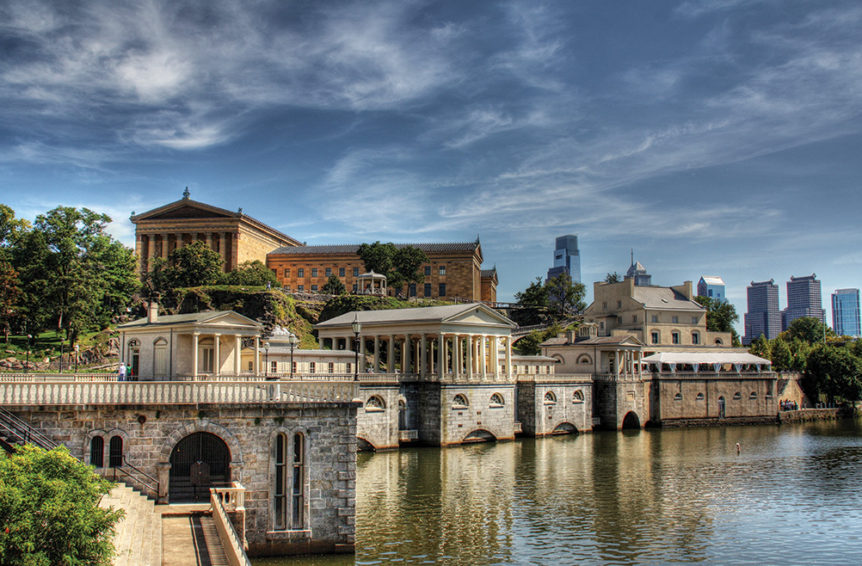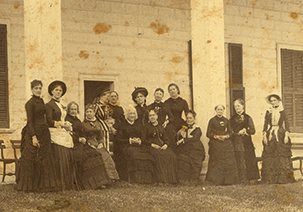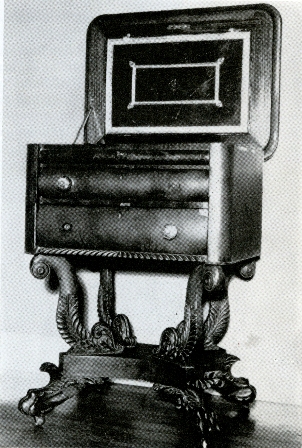“I once spent a year in Philadelphia. I think it was on a Sunday,” W. C. Fields said sometime in the early 1940s. Fields, born in Philadelphia and tied with fellow native Man Ray for recognition as Philadelphia’s merriest Dada prankster, was right about the city back then, but this is now. Philadelphia is booming, and so are its restaurants. …
Sites along the Schuylkill
The story goes that the Dutch, sailing up the Delaware River, missed the marshy entrance to its largest tributary. Upon discovering their mistake, the Europeans dubbed the waterway the Schuyl Kill, or “Hidden River.” The Dutch were soon squeezed out of Pennsylvania by the Swedes and then the English, but the name somehow stuck, showing up as the “Scool Kill …
The Fabric Workshop and Museum
At the moment, Philadelphia’s Fabric Workshop and Museum has a national reputation though it is less well known around town. In one respect it is a little like its founder, the late Marion “Kippy” Boulton Stroud, who was both bold (and bossy) but surprisingly self-effacing. Unlike the Rosenbach or the Barnes, to name two of the city’s other idiosyncratic museums, …
Mount Vernon Comes to Freeman’s
Despite its dainty name the Mount Vernon Ladies’ Association is not an outfit to be trifled with. Nor is it one to do anything by half measures. Founded in 1858, it is comprised of twenty-seven members, each representing a state in the union at that time, who approached and still approach the project of preserving George Washington’s estate with an almost …
Glackens and Whistler: A young man’s attraction
When citing the formative influences on the American artist William Glackens, we tend to round up the usual suspects: Diego Velázquez, Frans Hals, Édouard Manet, and Pierre-Auguste Renoir. It is true that all of these painters, as well as Edgar Degas, Théophile Steinlen, Claude Monet, and Henri Matisse, evoked Glackens’s admiration, and he firmly believed that Americans who wished to …
Eminent Victorians
Photography by Alan Kolc | from The Magazine ANTIQUES, September/October 2013. The brick house, handsomely trimmed in brownstone, dates from 1866, one of six identical buildings in the heart of Philadelphia’s historic district. Situated a few streets away from Independence Hall, it was once the home of Brevet General Henry Harrison Bingham (1841-1912), a Congressional Medal of Honor laureate for …
From the Archives: Philadelphia Empire furniture by Antoine Gabriel Quervelle
The design legacy of Antoine Gabriel Quervelle
Cradle of liberty, cradle of craft
from The Magazine ANTIQUES, March/April 2013 | An impressive roster of renowned craftsmen trained and worked in Philadelphia during the twentieth century. This flourishing activity is due to the city’s long history as a center for artisans extending back to the time of its founding. The French Huguenot silversmith Cesar Ghiselin arrived in Pennsylvania in 1681 in the company of …
Philadelphia collects: City folk
from The Magazine ANTIQUES, March/April 2013 | Twenty-five years ago in these pages, Beatrice B. Garvan wrote about an anonymous collection of Pennsylvania folk art that was already more than a quarter-century in the making. Garvan was struck by the coherence of the assemblage that was ever in flux, by the sense of motion generated by the collectors’ unyielding search …
Philadelphia collects: The torch bearer
from The Magazine ANTIQUES, March/April 2013 | This issue celebrates the long history of Philadelphia as the city of great artist-artisans. That history would be even more impressive had there been a Helen Drutt on the scene in the eighteenth and nineteenth centuries to make sure that absolutely nothing of value was lost to posterity. What Drutt has done for …




